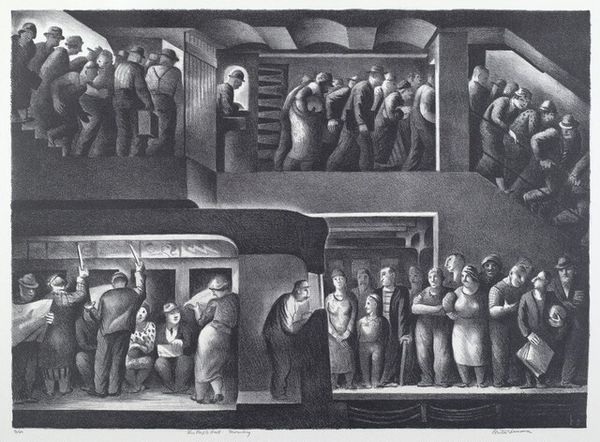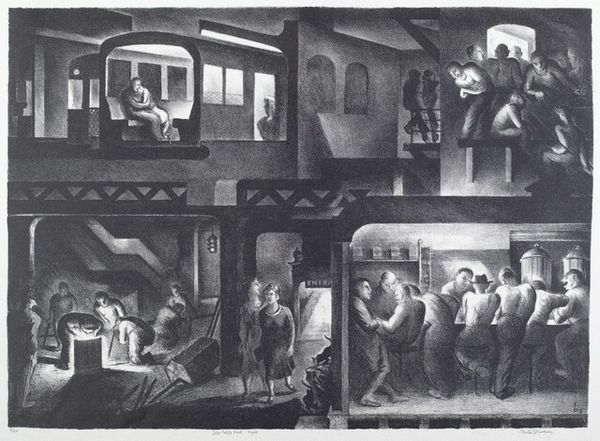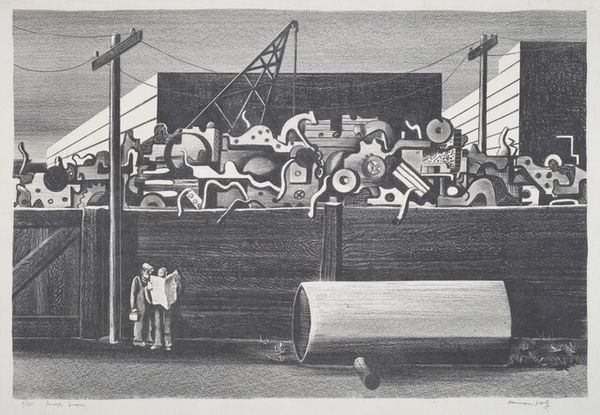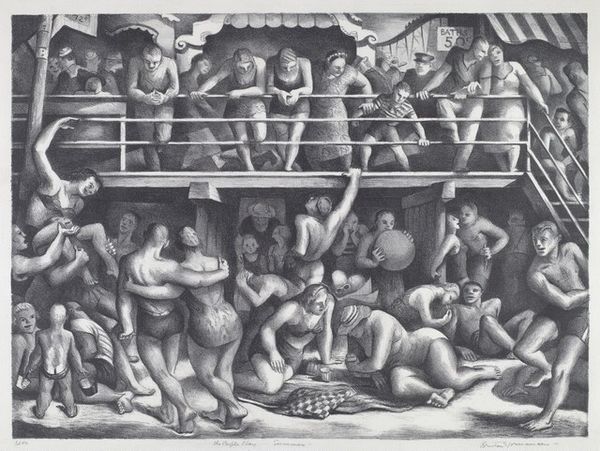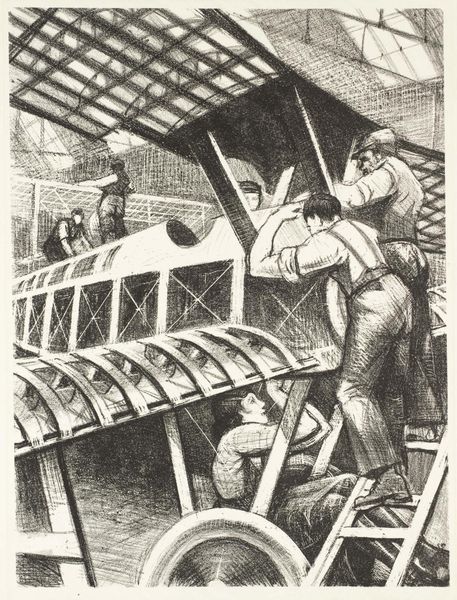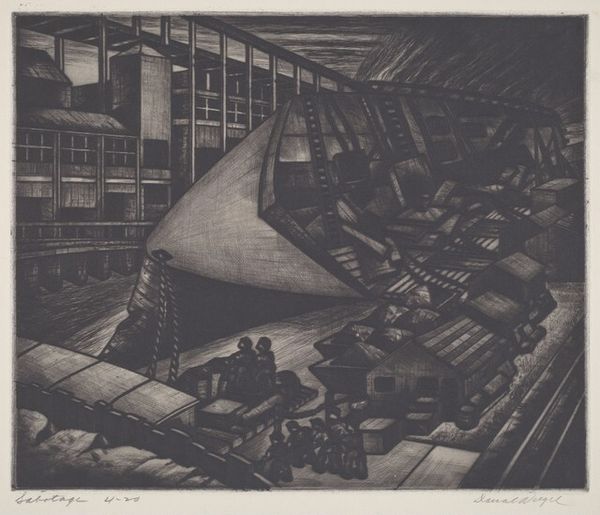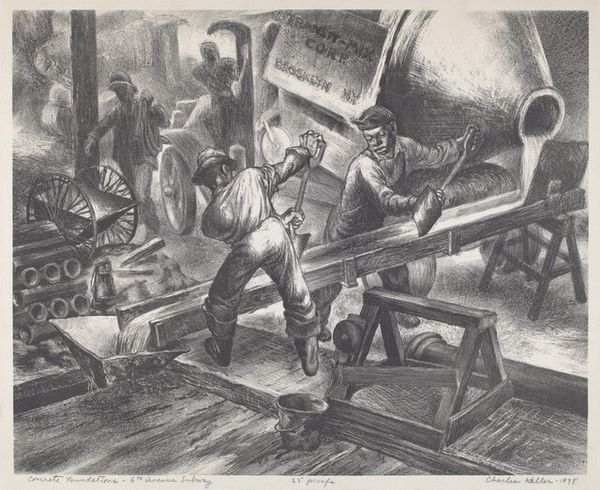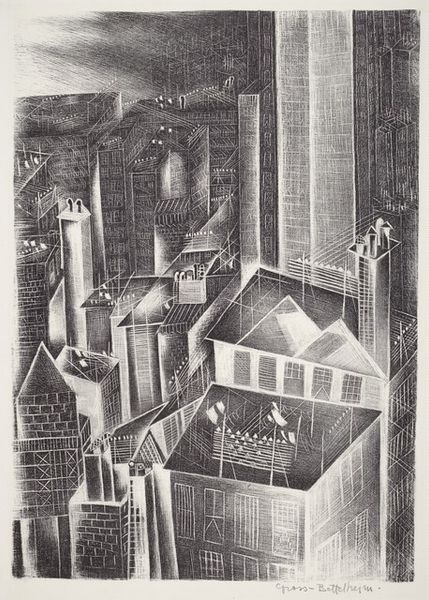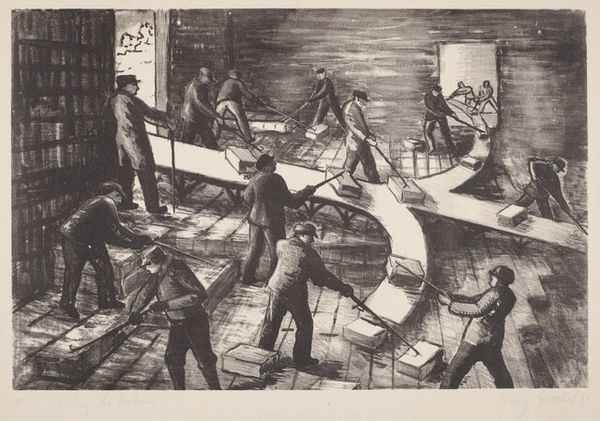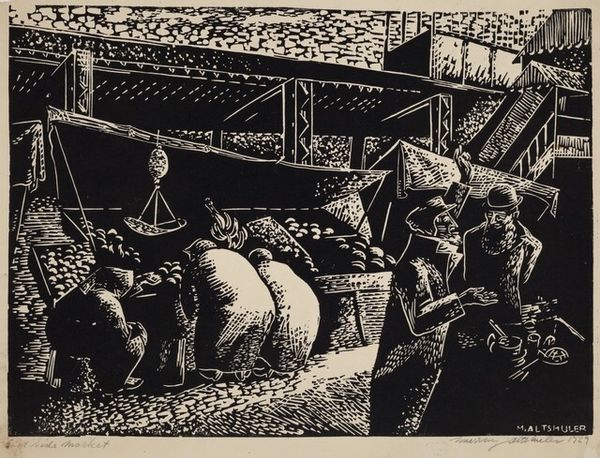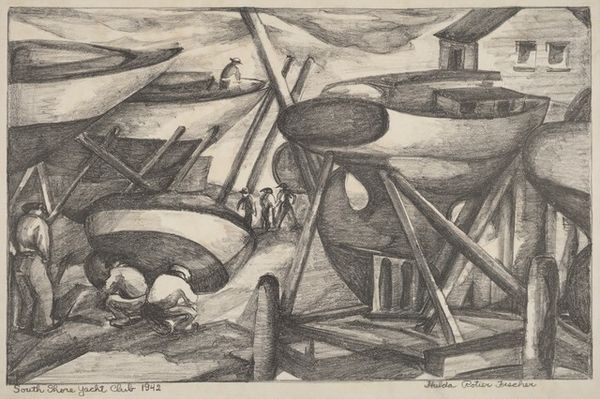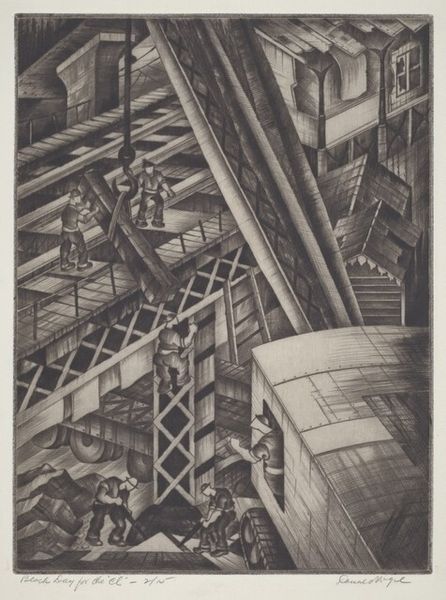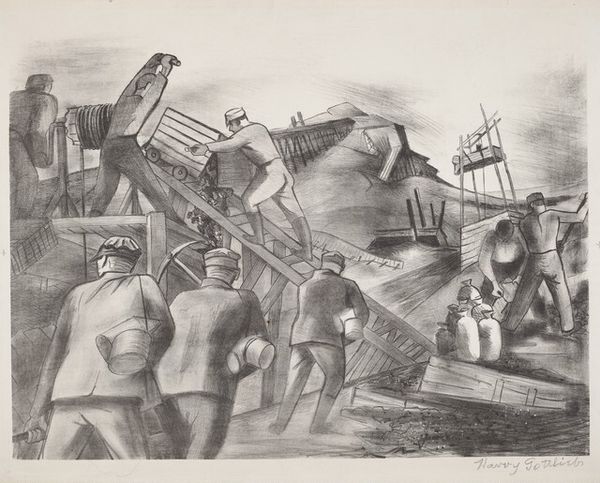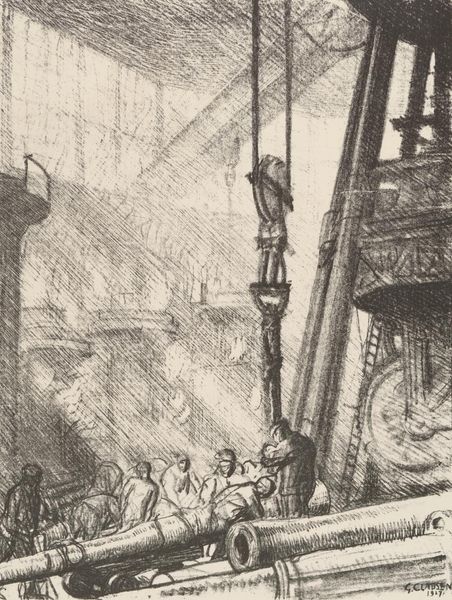
drawing, print, graphite
#
drawing
# print
#
charcoal drawing
#
social-realism
#
black and white
#
ashcan-school
#
graphite
#
cityscape
#
genre-painting
#
charcoal
Copyright: National Gallery of Art: CC0 1.0
Curator: Let’s examine Benton Spruance’s print, "The People Work - Noon," created in 1937. It’s rendered in black and white. What strikes you initially about this scene? Editor: The sheer density of figures overwhelms me. It's a study in contrasts—the throng of busy pedestrians versus the exhausted workers taking a break. It evokes a feeling of both bustling urban life and the weariness of labor. Curator: Absolutely. Spruance, known for his social realism and association with the Ashcan School, frequently focused on the lives of everyday people. Considering it's a print, probably a lithograph given the tones, we see an exploration of how these materials are put into practice. There is labor represented not only in the subject, but in the medium itself. Editor: The figures above—crossing perhaps a bridge or elevated walkway—feel like classical depictions of commerce. It puts me in mind of the figures you’d find on a Roman frieze depicting the Pax Romana…except here, they are headed for lunch. There's also a definite religious iconography here – look at the figures looking down from what appear to be arches and illuminated within the darker architecture of the construction scene below. It could reference any number of annunciation scenes across art history. Curator: A fitting comparison! Spruance was deeply concerned with social issues and the impact of industrialization on human life. This would come through with considerations of class and gender roles present in the materials themselves; who could afford to eat at that diner? Who could cross the bridge carefree? Who has to stop at that precarious intersection? Editor: Right. Even that traffic light looming over everything—an early symbol of modernity—has an ominous, controlling presence. It's like a silent god dictating the rhythms of their lives, while also drawing to mind classical symbols of warning such as the Tower of Babel. Curator: Well, I leave this print considering its function in a larger cultural milieu: art made for the people about the people using relatively accessible printmaking materials. Editor: I agree. For me, the emotional and cultural density compressed into this single black and white print is astounding. A clear message of collective labor for all classes is expressed through its various symbolic cues.
Comments
No comments
Be the first to comment and join the conversation on the ultimate creative platform.
